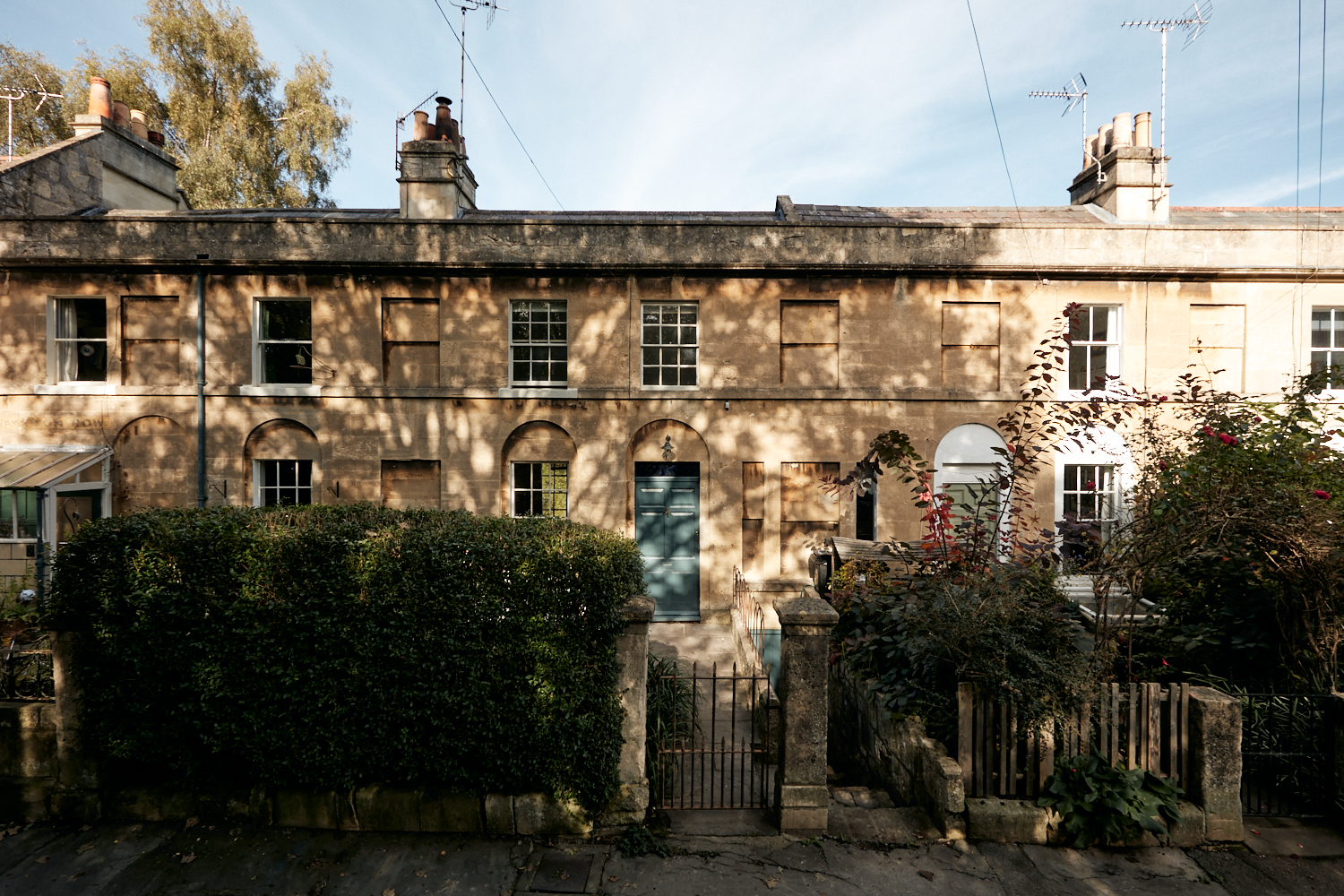The primary entrance is via a wrought-iron gate leading into a pretty enclosed garden. A short flight of steps to one side lead down to the shared ginnel, providing direct access to the garden.
The ground floor opens out to a landing. One of the two bedrooms is positioned to the immediate left; this is a beautifully proportioned room with restored timber floorboards and two large sash windows at either side of the room inviting an exceptional quality of natural light in. The original wall panelling has been painstakingly restored to reveal the character and architectural integrity of the house; a stone fireplace is positioned centrally, flanked by deep-set cabinetry and shelving. Two adjoining doors lead back through to the central landing, where a workspace or reading area has been created in the void beneath the stairwell.
The lower level of the house has been artfully reconfigured to form a cosy, inviting living space with original tiled flooring and an expansive sash window framing views onto the garden and a large log-burning stove. The bespoke kitchen spans the length of one wall, with appliances neatly hidden behind fluted oak fronts. A deep larder cupboard is set into the wall opposite, coloured in a rich terracotta. The fully-tanked vaults adjoining the kitchen create a dining area, with the original flagstone flooring, whitewashed walls and natural light streaming down from the skylight above. A large utility space and cloakroom is positioned on the opposite side.
The main bedroom lies on the first floor; a peaceful room decorated in warm heritage colours, with sash windows on either side of the room providing dual aspect and plentiful natural light. Timber floorboards continue underfoot, with a fireplace in this room also. There is access via a large hatch overhead to the extensive, almost head-height loft space above. Adjacent is a softly coloured Tadelakt bathroom with a walk-in shower and bath, finished in brass sanitaryware. From this level, the far-reaching views across the gardens, the river and the backdrop of the surrounding Somerset countryside are quite breathtaking.
Planning permission and listed building consent have been granted for a glass-fronted, timber-framed extension. Architectural plans and further details can be provided on request.
The Great Outdoors
A paved terrace leading directly from the house provides a beautiful space to eat outside in warmer months. From here, the undulating garden stretches 200 feet down to the river. Tiered flower beds, a mature rose garden and specimen trees create plenty of interest throughout the year, with a glasshouse and potting station at the halfway point. A garden studio provides an idyllic space for home working, a creative studio or workshop, fully fitted with electric heating, naturally insulated walls and fast broadband.
At the foot of the garden, a private pontoon has been restored from reclaimed Stourhead timber – the perfect jumping-off point for wild swimming, boating and kayaking on the River Avon. The Grade II* listed
Cleveland Pools, believed to be the oldest public outdoor swimming pool in England, is also easily accessible from the house.
Out and About
The area is renowned for the quality of its independent and state schooling, including St Stephens’ Primary School, King Edward’s and Prior Park College. Royal High, Royal High Junior School, Kingswood School and Kingswood Preparatory School are also nearby.
Transport links are excellent, with Bath Spa train station at the southern edge of the city centre – around a 15-minute walk from Daniel Street – providing a direct line to London Paddington in under 80 minutes. The M4 motorway lies to the north of the city and is quickly reachable by car.
